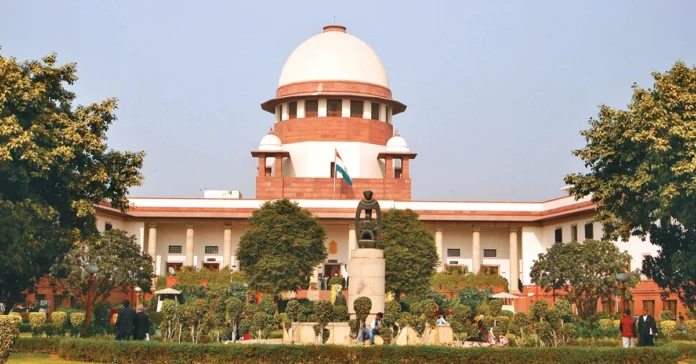The Supreme Court has directed the Union of India to frame mandatory rules under Section 40 of the Rights of Persons with Disabilities Act, 2016, ensuring accessibility at public places and services for persons with disabilities.
The Bench of Chief Justice of India DY Chandracuhd, Justice JB Pardiwala and Justice Manoj Misra on Friday held that Rule 15 of the Rights of Persons With Disabilities Rules, 2017 was ultra vires the parent Act, since it did not provide mandatory guidelines on accessibility.
The Bench passed the verdict on a PIL filed in 2005 by Rajive Raturi, a visually-challenged person, seeking directions to ensure meaningful access to public spaces for persons with disabilities.
In 2017, the top court of the country had passed a slew of directions to the Centre and States for making public buildings accessible.
In November 2023, while considering the compliance of the direction, the Apex Court had directed the Centre for Disability Studies, NALSAR University of Law, to make a report on steps to be taken to make public buildings and spaces fully accessible to persons with disabilities.
Authored by CJI Chandrachud, the verdict analysed international treaties such as the United Nations Convention on the Rights of Persons with Disabilities and other judgments.
The verdict was passed in the light of the report submitted by CDS, NALSAR, headed by Professor Amita Dhanda.
The Bench ruled that accessibility was not a standalone right; it was a prerequisite for PWDs to exercise other rights meaningfully.
It further said that accessibility required a two-pronged approach. One focused on ensuring accessibility in existing institutions/activities often through retrofitting and the other focused on transforming new infrastructure and future initiatives.
Siding with the CDS report, the Apex Court held that Rule 15, in its current form, did not provide for non-negotiable compulsory standards, but only persuasive guidelines. While the RPWD Act created a mechanism for mandatory compliance with a set of non-negotiable accessibility rules, the RPWD Rules have transformed into self-regulation by way of a delegated legislation.
The absence of compulsion in the Rules was contrary to the intent of the RPWD Act. While Rule 15 created an aspirational ceiling, through the guidelines prescribed by it, it was unable to perform the function entrusted to it by the RPWD Act – to create a non- negotiable floor.
The Bench observed that a ceiling without a floor was hardly a sturdy structure. While it was true that accessibility was a right that required “progressive realisation”, this could not mean that there was no base level of non-negotiable rules that must be adhered to.
It said while the formulation of detailed guidelines by various Ministries was undoubtedly a laudable step, this must be done in addition to prescribing mandatory rules, and not in place of it. Rule 15(1) contravened the provisions and legislative intent of the RPWD Act and thus, was ultra vires the Act, noted the Bench.
It ordered the Union government to delineate mandatory rules, as required by Section 40, segregating the non-negotiable rules from the expansive guidelines already prescribed in Rule 15, within a period of three months.
The Union Government must conduct this exercise in consultation with all stakeholders, it said. While directing NALSAR- CDS to remain involved in the process.
It said that progressive compliance with the standards listed in the existing Rule 15(1) and the progress towards the targets of the Accessible India Campaign must continue unabated. In addition, a baseline of non-negotiable rules must be prescribed in Rule 15, it added.
Once these mandatory rules were prescribed, the Centre States and Union Territories were directed to ensure that the consequences prescribed in Sections 44, 45, 46 and 89 of the RPWD Act, including the holding back of completion certificates and imposition of fines, were implemented in cases of non- compliance with Rule 15.
The Bench held that while carrying out the exercise, the rules should prioritise universal design principles, making spaces and services usable by all individuals to the greatest extent possible, without requiring adaptations or specialised design.
It said the Rules should cover a wide range of disabilities, including physical, sensory, intellectual, and psychosocial. This included provisions for specific conditions such as autism, cerebral palsy, intellectual disabilities, psychosocial disabilities, sickle cell disease, and ichthyosis;
The Apex Court mandated the integration of assistive and adaptive technologies, such as screen readers, audio descriptions, and accessible digital interfaces, to ensure digital and informational accessibility across public and private platforms.
it said the process should involve continuous consultation with persons with disabilities and advocacy organisations to incorporate lived experiences and practical insights.
The Bench listed the matter for March 7, 2025, to consider the compliance by the Union Government.
The petitioner was represented by Senior Advocate Dr. Colin Gonsalves. Additional Solicitor General Vikramjit Banerjee appeared for the Union government.


